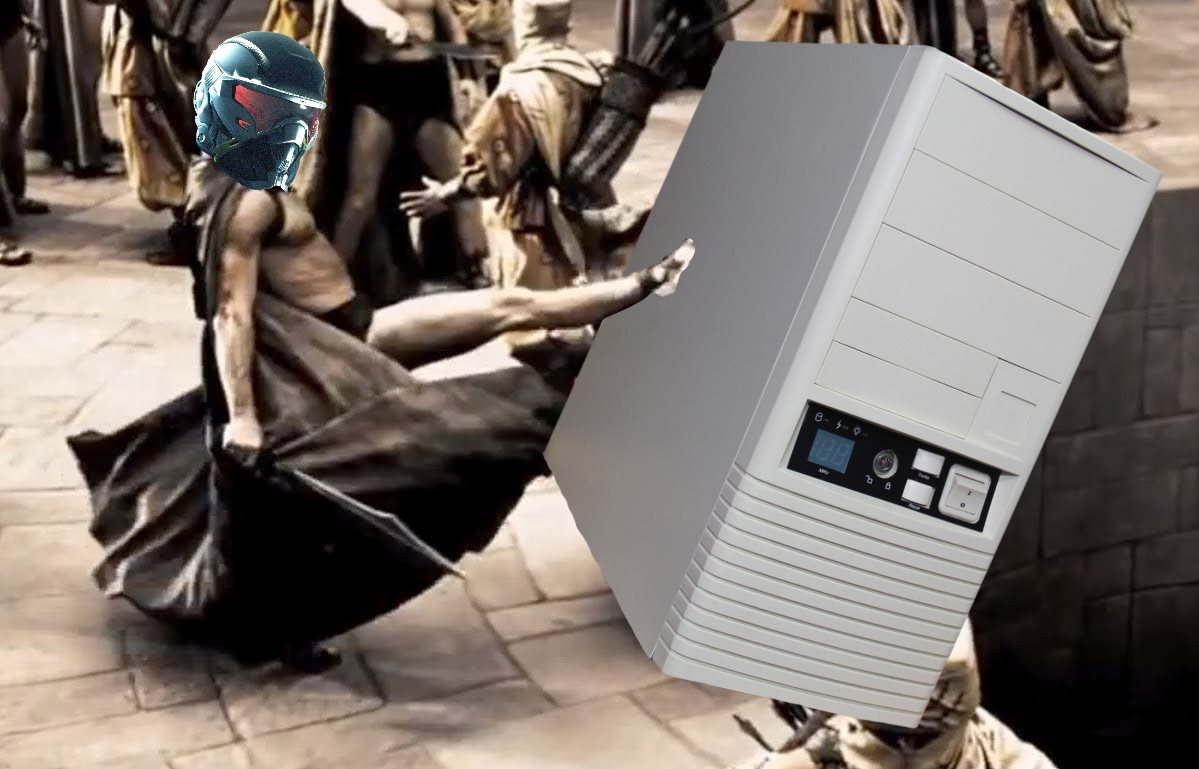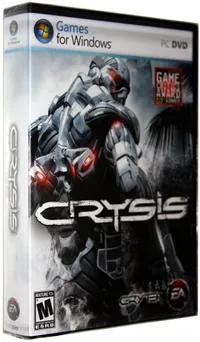10 Modern, Mainstream GPUs And Ryzen: Can They Play Crysis?
The Game That Conquered PCs
As we discussed a couple of days ago in But Can It Run Crysis? 10 Years Later, Crytek's graphical design work made this title a legend in the minds of many enthusiasts. It was magnificent, with irreproachable gameplay. And most of all, Crysis challenged the most powerful hardware available back in 2007. In fact, it continues bludgeoning high-end graphics cards in 2017.
Crysis was one of the first games to incorporate DirectX 10 and 64-bit support. In doing so, it became iconic as a benchmark for the fastest machines. Crytek made its mark on history by causing gamers to ask, "can it run Crysis?"
We must mention that this was a veritable demonstration of technology from beginning to end, in addition to offering excellent gameplay (for those who could manage a decent frame rate). Now, just after its 10th anniversary, we dusted off our old copy to test Crysis once again. Whereas the Tom's Hardware U.S. team put its emphasis on benchmarking a decade of graphics hardware, Tom's Hardware France gathered up some modern mainstream GPUs and a Ryzen-based platform to test frame rates, CPU utilization, and memory use, chasing down possible bottlenecks.
Graphics Quality: As Good As Ever
The first thing we noticed upon firing up Crysis after so long was that it's just as beautiful as we remember. The following video is evidence. It's hard to imagine this is 10 years old. Crytek's CryEngine 2 could still serve as the foundation for a beautiful open-world first-person shooter in 2017.
The shaders look great, yielding a believable experience that's well-rendered (sunlight passing through the foliage is still impressive). In particular, we remember loving those destructible objects at the mercy of an inescapable physics engine. Crysis almost hasn't aged, though it does show a few wrinkles (particularly in the way it manages shadows, subsequently improved in later games). The main feature missing from Crysis was ambient occlusion.
2007-Era PCs Hammered By Crysis
The recommended configurations for Crysis were relatively in-line with the times. In practice, though, they were far from perfectly smooth.
| Header Cell - Column 0 | Minimum Configuration | Recommended Configuration |
|---|---|---|
| CPU | Intel Pentium 4 2.8 GHz (3.2 GHz for Vista) or faster, Intel Core 2.0 GHz (2.2 GHz for Vista) or faster, AMD Athlon 2800+ (3200+ for Vista) or faster | Core 2 Duo 2.2 GHz/Athlon X2 4400+ or better |
| Memory | 1GB (Windows Vista requires 1.5GB) | 2GB |
| Operating System | Windows XP/Vista/7 | Windows XP/Vista/7 |
| Graphics | Nvidia GeForce 6800 GT, ATI Radeon 9800 Pro (Radeon X800 Pro for Vista) or better, 256MB of Graphics Memory | Nvidia 7800 Series, ATI Radeon 1800 series or better, 512MB of Graphics Memory (Nvidia GeForce 8800 GTS/640) |
| Disk Space | 12GB | 12GB |
In November of 2007, our complete benchmark of the game under DirectX 10 clearly showed that even the most powerful machines couldn't stand up to its most taxing settings. The following table summarizes our findings. In it, we hoped to achieve more than a paltry 24 frames per second.
Get Tom's Hardware's best news and in-depth reviews, straight to your inbox.
Today, Crysis runs quite well (either in 32- or 64-bit mode) under Windows 10, without any problematic bugs. You may have to fiddle around with Alt+Enter to put the game in full-screen mode, particularly if you own a G-Sync-equipped display. But let's focus on the performance we came here to explore.
MORE: Best Graphics Cards
MORE: Desktop GPU Performance Hierarchy Table
MORE: All Graphics Content
-
redgarl It proves that Ryzen is not a concern unless using an High End GPU at 1080p... and who in his right mind would do that especially when taking the cost factor.Reply -
vinay2070 Wish you included an 8600K@5GHz or an 8700K@5GHz for comparison. Ryzen is not a CPU to be used when games cannot thread well. Especially old games.Reply -
Brian_R170 Looking at the article from 2 days ago "But Can It Run Crysis? 10 Years Later" there is one graphics card that is the same (RX 580) between the test setups. The frame rates are 10-45% higher with the 7700K vs. the 1600X. Are the settings the same?Reply -
Brian_R170 Reply20381452 said:Looking at the article from 2 days ago "But Can It Run Crysis? 10 Years Later" there is one graphics card that is the same (RX 580) between the test setups. The frame rates are 10-45% higher with the 7700K vs. the 1600X. Are the settings the same?
I actually did the math and it's 10-42% higher average frame rates and 35-56% higher minimum frame rates. Is this only due to the higher clock speed and IPC of the 7700K? -
killerchickens Reply
Resolution is not every thing don't forget about refresh rate, not every one is happy with 60hz some one might want up to a 240hz 1080p monitor.20381318 said:It proves that Ryzen is not a concern unless using an High End GPU at 1080p... and who in his right mind would do that especially when taking the cost factor.
-
csm101 really dont understand why crysis is still getting benchmarked. let me state what i have stated in the previous article. this is a game with un-optimized code everywhere. so the result was that it requires lot of h/w power to play the game smoothly. hence this is a game that should not be considered for benchmark. instead take Crysis 3 and we all know that Cryengine 3 is way more better and smoother than previous engines. so stop giving credit to a game that is running on stupid code.Reply -
pegasusted2504 I always used to get decent framerates when I played Crysis AFTER I bought a 9800GX2 and then had to upgrade from and AMD cpu due to under-utilisation of the card so got a QX9650.... Great performance :)Reply -
jessterman21 Just a correction: Crysis was one of the first games WITH Ambient Occlusion. There isn't an option to enable or disable it in the settings, but it is there on High and Very High. You can tweak its darkness and radius with cvars.Reply -
ammaross Reply20381509 said:20381452 said:Looking at the article from 2 days ago "But Can It Run Crysis? 10 Years Later" there is one graphics card that is the same (RX 580) between the test setups. The frame rates are 10-45% higher with the 7700K vs. the 1600X. Are the settings the same?
I actually did the math and it's 10-42% higher average frame rates and 35-56% higher minimum frame rates. Is this only due to the higher clock speed and IPC of the 7700K?
"RX 580" does not necessarily mean stock. One could be a stock-settings card and the other could be an MSI Gaming X+ version. That alone could shift the FPS significantly.
-
10tacle Reply20381644 said:really dont understand why crysis is still getting benchmarked. let me state what i have stated in the previous article. this is a game with un-optimized code everywhere. so the result was that it requires lot of h/w power to play the game smoothly. hence this is a game that should not be considered for benchmark. instead take Crysis 3 and we all know that Cryengine 3 is way more better and smoother than previous engines. so stop giving credit to a game that is running on stupid code.
Because the original Cryengine delved into completely new territory with light ray tracing and water and foliage texturing. On top of that, it was an open world shooter, not a sandbox player like previous AAA shooters that took place in corridors, metro cities, etc. Crysis 2 was not nearly as challenging on hardware as it was a closed city world where there wasn't much distance draw and just had simple building and street textures. On top of that it was dumbed down for consoles. Cryengine 3 was dumbed down for consoles as well.
In any event, after two articles on this, I'm going to have to break out my original Crysis 1 DVD and install it and play it again on my 1440p rig and check out some graphics mods. Anyone remember when you could actually buy a physical copy of a PC game in a box in a store? I hadn't played it since 2010 or so.
The main takeaway I got from this is how well the 8GB R9 390 scaled with an increase in AA use and higher resolution over Nvidia counterparts or even the 8GB RX 580. Case in point: at no AA at 2560x1440, the R9 390 and RX 580 are only apart by 1FPS average, yet with 8xFSAA dialed in, the R9 390 leaves the RX 580 behind by 7FPS. Very impressive and I have to only assume that is attributed to the 390's 512-bit memory bus to the 256 bit for the 580.
You don't see this separation in an R9 390 review from two years ago regarding Crysis 3 when jumping up in resolution and AA like here (https://www.techpowerup.com/reviews/Sapphire/R9_390_Nitro/11.html). That's all you need to know about why the original Crytek 1 engine is still useful and why later versions of Crysis or other game engines dumbed down for consoles just aren't in the same resource demanding universe.




